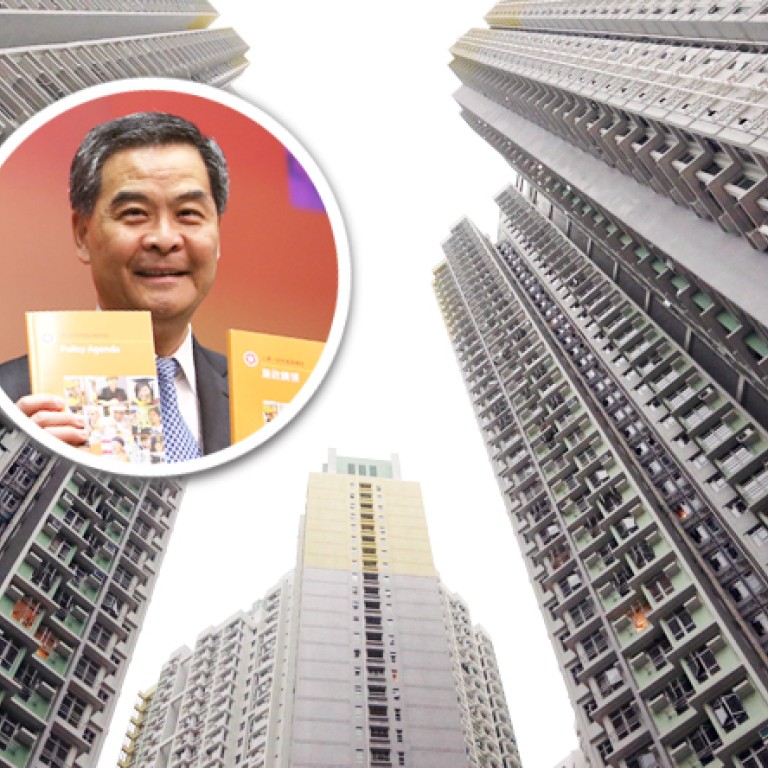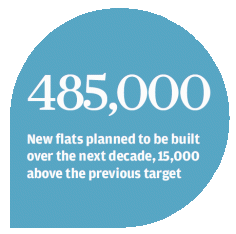
CY Leung's building bonanza 'could cost Hongkongers' quality of life'
The government's ambitious target for new housing has allowed fresh ideas to flourish, analysts say, but it could also affect Hongkongers' quality of life.

A government source said 80 sites - which will be rezoned from green belt or government, institutional or community use, as announced in Leung's speech - would yield 89,000 flats, taking the total due to come online in the next decade to 485,000, 15,000 over the target.
The new sites include the 20-hectare Queen's Hill in Fanling and a nine-hectare site in Tai Po, originally allocated for a private university and hospital, respectively. All should be ready for development within five years.
The Development Bureau will also seek to speed up developments by introducing a pilot arbitration scheme to ease lengthy negotiations over land premiums - the sum a developer must pay to the government to change the land lease when developing a site. Negotiations can take months or years, but under the arbitration system, both the government and developer would only have to agree on the price set by an independent arbitrator.
Leung also announced plans to explore underground development in four districts - Tsim Sha Tsui West, Causeway Bay, Happy Valley and an area between Admiralty and Wan Chai. They were chosen because they offer the potential to exploit underground space below government-owned parks such as Kowloon Park, Hong Kong Park and Victoria Park, and space below the hillside on Queen's Road East.
But meeting the target has a cost. Development density in areas outside the already packed Kowloon Peninsula and north side of Hong Kong Island will be increased by an average of about 20 per cent. The development of the former Kai Tak airport and the eastern expansion of Tuen Mun new town will be among those sites affected.
At Kai Tak, the new rules will allow an extra 6,800 flats and 430,000 square metres of office space. Height limits will also be relaxed.
The lifting of a moratorium on new flats in Pok Fu Lam will allow the building of 11,900 public flats and subsidised homes for sale at five sites close to the 9,000-home Wah Fu Estate, which will also be redeveloped.
In the longer term, a new town at Hung Shui Kiu will provide homes for 175,000 people, while about 53,000 flats will be built at Tung Chung. The government will also study reclamation outside Victoria Harbour.
But experts warned against claiming victory.
"There are still a lot of uncertainties in delivering the housing target," said Professor Chau Kwong-wing, a real-estate expert at the University of Hong Kong, "Residents may not want their views blocked by new flats and rezoning green belts could also run into opposition from green groups."
He also warned transport and community facilities could come under pressure.


